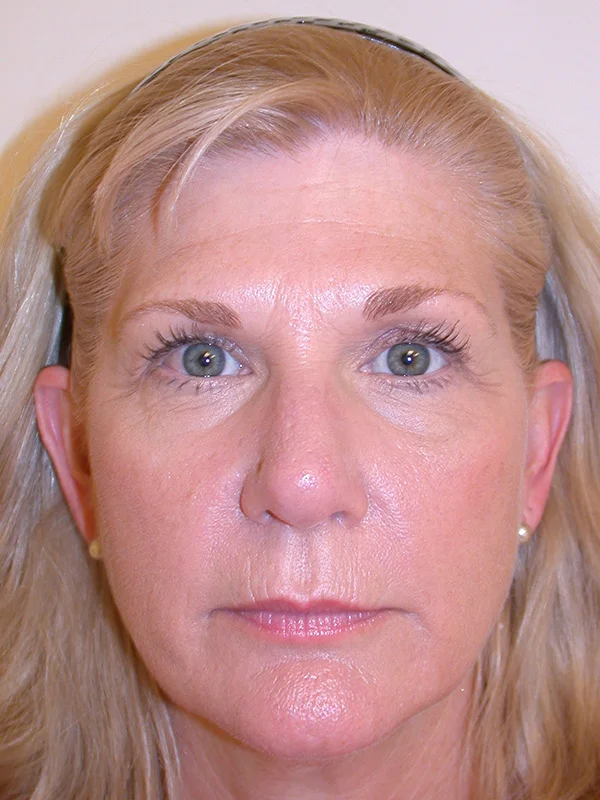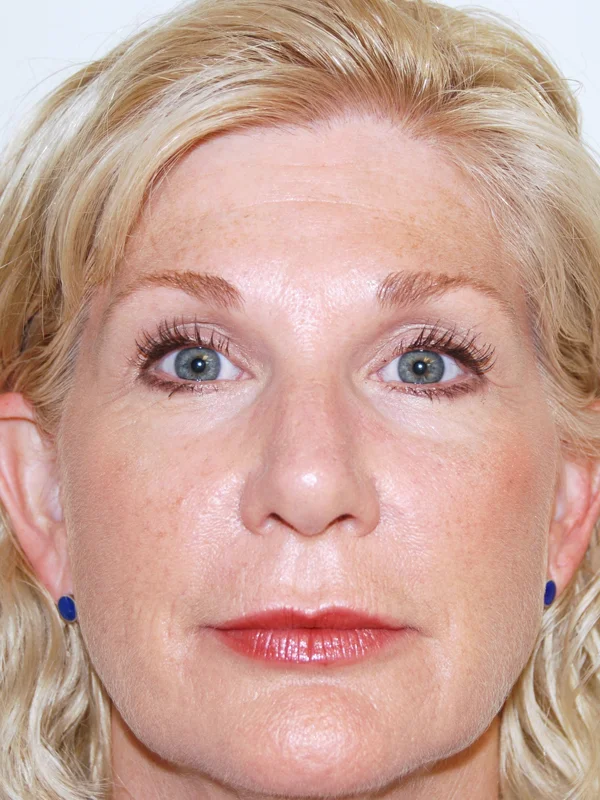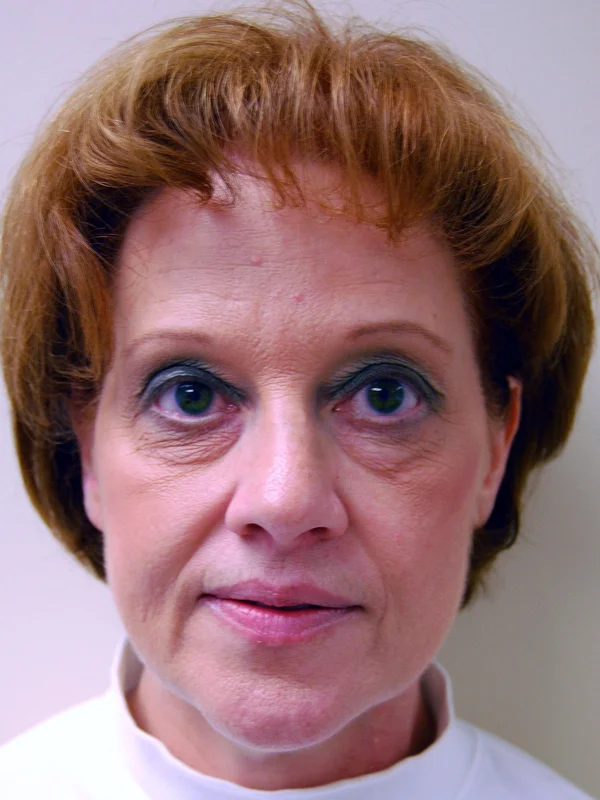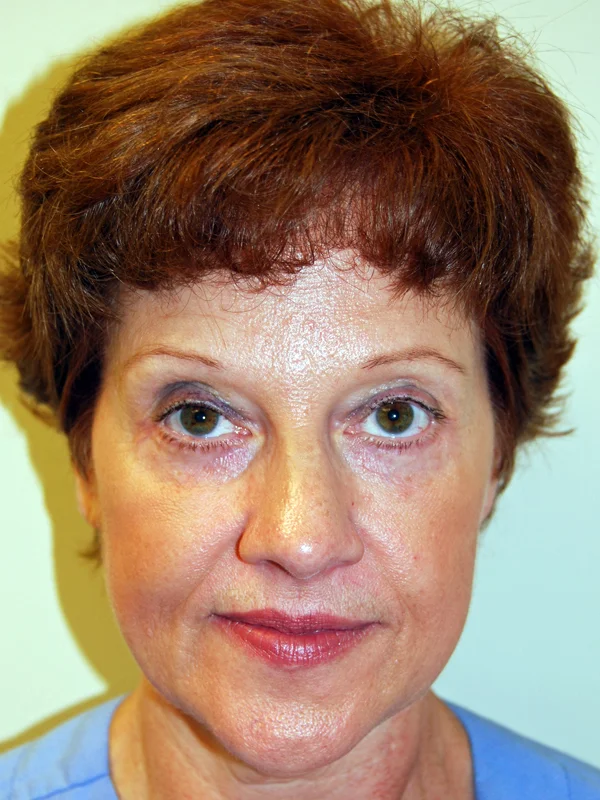Blepharoplasty is the procedure that rejuvenates the upper and lower eyelids restoring a younger, refreshed look. There a number of blepharoplasty procedures, and Dr. Zemmel will carefully select the correct one for your special needs.
Blepharoplasty can remove fat along with excess skin and muscle from the upper and lower eyelids. Blepharoplasty can also correct drooping upper lids and puffy bags below your eyes, features that make you look older and more tired than you feel. They may even interfere with your vision. Dr. Zemmel sometimes combines lower blepharoplasty with a midface lift. This combination can restore the lower lid and cheek together. Blepharoplasty will not eliminate dark circles under your eyes or lift sagging eyebrows. If you have these concerns, please discuss them with Dr. Zemmel during your initial consult.
Blepharoplasty can be done alone, or in conjunction with other facial surgery procedures such as a facelift or brow lift, and Dr. Zemmel may recommend additional procedures to give you an overall balanced rejuvenation.
If you’re considering Blepharoplasty, or surgery to rejuvenate the upper facial area, this page will give you a basic understanding of the procedure: when it can help, how it’s performed, and what results you can expect. Dr. Zemmel will review the entire procedure in detail during your consultation.

Candidates For Blepharoplasty
Blepharoplasty can enhance your appearance and your self-confidence, and possibly improve your vision. Before you decide to have surgery, think carefully about your expectations and discuss them with Dr. Zemmel.
The best candidates for Blepharoplasty are men and women who are physically healthy, psychologically stable, and realistic in their expectations. Most are 35 or older, but if droopy, baggy eyelids run in your family, you may decide to have Blepharoplasty at a younger age.
A few medical conditions make blepharoplasty more risky. They include thyroid problems such as hypothyroidism and Graves’ disease, dry eye or lack of sufficient tears, high blood pressure or other circulatory disorders, cardiovascular disease, and diabetes. A detached retina or glaucoma is also reason for caution. You will need a complete ophthalmological exam before surgery.
Preparing For Your Surgery
Dr. Zemmel will give you specific instructions on how to prepare for surgery, including guidelines on eating and drinking, smoking, and taking or avoiding certain vitamins and medications. Carefully following these instructions will help your surgery go more smoothly.
While you’re making preparations, be sure to arrange for someone to drive you home after your surgery, and to help you out for a few days if needed.

Where Your Surgery Will Be Performed
Dr. Zemmel performs Blepharoplasty in his office operating room. This operating room is certified by the prestigious American Association for Accreditation of Ambulatory Surgery Facilities (AAAASF). This facility provides state-of-the-art equipment and highly trained staff for surgical assistance, nursing care, anesthesia and recovery. Our suite is near two major medical centers for added assurance. Blepharoplasty is usually done on an outpatient basis; rarely does it require an inpatient stay.
Types Of Anesthesia
Blepharoplasty is usually performed under local anesthesia with mild intravenous sedation. You’ll be asleep during the surgery and unaware of the procedure. Your will be completely pain free during the entire surgery.
The Surgery
Blepharoplasty usually takes one to two hours, depending on the extent of the surgery. If you are having a brow lift with upper and lower lids done, Dr. Zemmel will perform the brow lift first, then the upper lid procedure, followed by the lower lid procedure. The brow lift often changes the amount of skin removal of the upper lids and therefore must be performed first.
In a typical procedure, Dr. Zemmel makes incisions following the natural lines of your eyelids; in the creases of your upper lids, and just below the lashes in the lower lids. The incisions may extend into the crow’s feet or laugh lines at the outer corners of your eyes. Working through these incisions, Dr. Zemmel separates the skin from underlying fatty tissue and muscle, removes excess fat, and often trims sagging skin and muscle. The incisions are then closed with very fine sutures.
If you have a pocket of fat beneath your lower eyelids but don’t need to have any skin removed, Dr. Zemmel may perform a transconjunctival blepharoplasty. In this procedure the incision is made inside your lower eyelid, leaving no visible scar. It is usually performed on younger patients with thicker, more elastic skin.
After Your Surgery
After surgery, Dr. Zemmel will lubricate your eyes with ointment and will apply a cold compresses. Your eyelids may feel tight and sore as the anesthesia wears off, but you will have excellent pain medicine to control the discomfort. Dr. Zemmel will give you a prescription before surgery so you may get it filled and have it ready. If you feel any severe pain, call Dr. Zemmel immediately.
Dr. Zemmel will instruct you to keep your head elevated for several days, and to use cold compresses to reduce swelling and bruising. Bruising varies from person to person: it reaches its peak during the first week, and generally lasts 2 weeks. You’ll be shown how to clean your eyes, which may be gummy for a few days. Dr. Zemmel will recommend lubricant eye drops, since your eyelids may feel dry at first and your eyes may burn or itch. For the first few weeks you may also experience excessive tearing, sensitivity to light, and temporary changes in your eyesight, such as blurring or double vision.
Dr. Zemmel will follow your progress very closely for the 2 weeks. The stitches will be removed 5 days after surgery. Once they’re out, the swelling and discoloration around your eyes will gradually subside, and you’ll start to look and feel much better.
Getting Back To Normal
You should be able to get back to your normal daily activities in 2 or 3 days, but you may not be socially presentable for 7 to 10 days. Many patients will wear sunglasses outside of the house to cover the bruising.
You will not be able to wear contact lenses for about two weeks, and even then they may feel uncomfortable for a while as you tear production returns to normal. By then, depending on your rate of healing and Dr. Zemmel’s instructions, you’ll probably be able to wear makeup to hide the bruising that remains. You may be sensitive to sunlight, wind, and other irritants for several weeks, so you should wear sunglasses and a special sunblock made for eyelids when you go out.
Dr. Zemmel will tell you to keep your activities to a minimum for three to five days, and to avoid more strenuous activities for about three weeks. It’s especially important to avoid activities that raise your blood pressure, including bending, lifting, and rigorous sports. You may also be told to avoid alcohol, since it causes fluid retention.

Your New Look
Healing is a gradual process, and your scars may remain slightly pink for a few months after surgery. Blepharoplasty scar heal extremely well, and eventually they will fade to a thin, nearly invisible white line.
The positive results of your Blepharoplasty- the more alert, refreshed, and youthful look- will last for many years.



